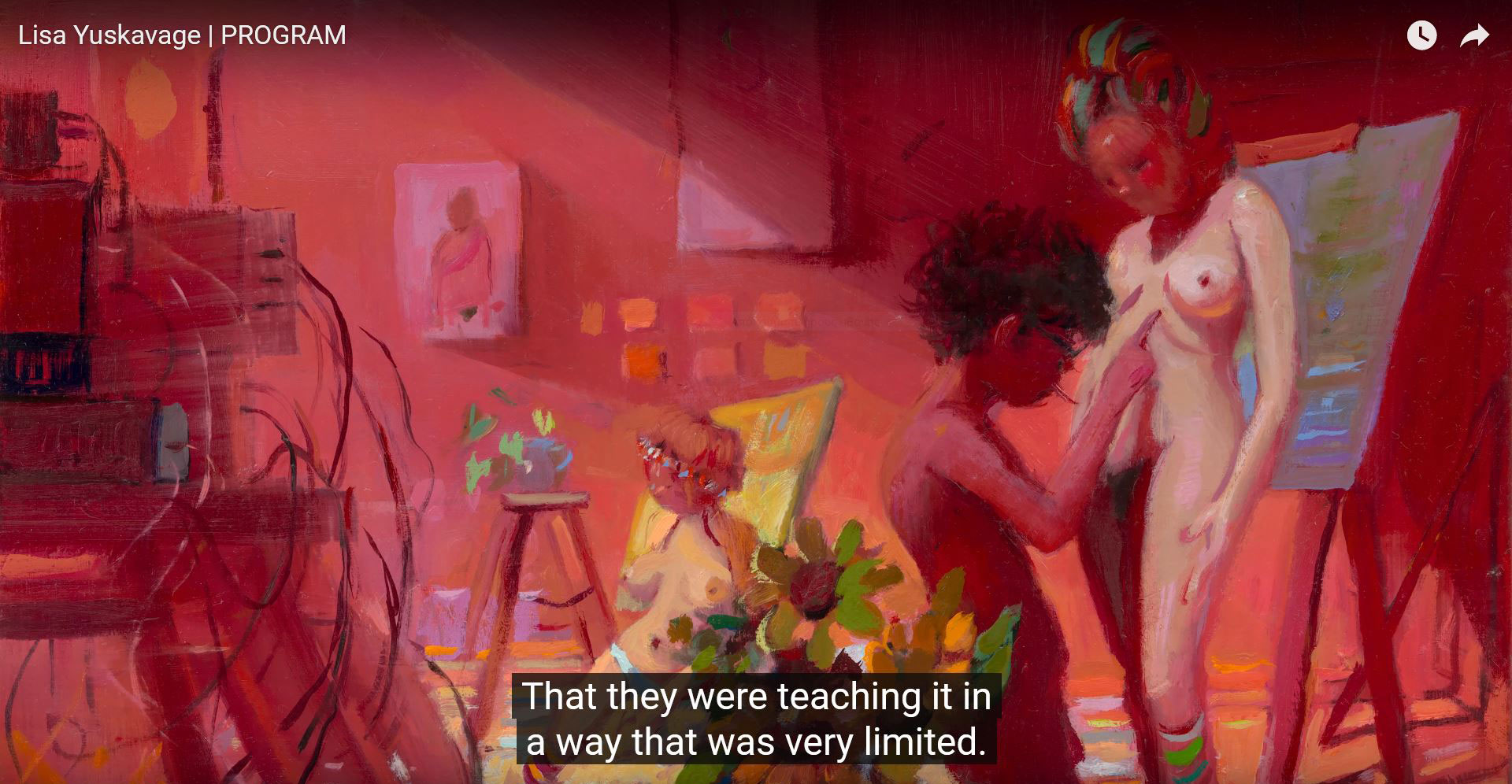VIDEO: Lisa Yuskavage
 “When I come to my studio, I always tell myself anything is possible. Remember that. Everything and anything is possible. This is part of your job description: to be open to the changes and the possibility of change.… Maybe that’s why I started painting studios.”
“When I come to my studio, I always tell myself anything is possible. Remember that. Everything and anything is possible. This is part of your job description: to be open to the changes and the possibility of change.… Maybe that’s why I started painting studios.”
One of the most original and influential artists of the past three decades, Lisa Yuskavage creates works that affirm the singularity of the medium of painting while challenging conventional understandings of genres and viewership. At once exhibitionist and introspective, her rich cast of characters and their varied attributes are layered within compositions built of both representational and abstract elements, in which color is the primary vehicle of meaning.
For her solo exhibition “Rendez-vous”, Lisa Yuskavage presents new large-scale paintings, each set within an imagined artist’s studio. Saturated in deep, jewel-like pigments, these works form part of her ongoing exploration of the processes and complexities of art making. The studios become stages where characters from her oeuvre are intertwined, and where time moves backward and forward.
The “rendez-vous” of the show’s title alludes to the unique way in which painting allows for different moments in time to coexist in one space simultaneously. The works establish a dialogue between personal iconography and a tradition of studio portrayals by artists as varied as Gustave Courbet, Henri Matisse, Georges Braque, and more contemporary figures like Philip Guston and Bruce Nauman. Yuskavage’s frequently ignoble and distinctively American subjects contrast with her original approach to color and light, inviting connections with earlier painterly traditions, such as color field painting, impressionism, and postimpressionism.
“The Artist’s Studio” (2022) is a kaleidoscopic composition featuring depictions of Yuskavage’s artworks within a barn-like studio. An urchin-like artist in front of a green, luminous painting-within-the-painting is a character from one of Yuskavage’s earliest and groundbreaking works, “The Ones That Don’t Want To: Bad Baby” (1991). Her presence in the foreground conflates different realms and moments in time, while also complicating the idea of self-portraiture, a genre Yuskavage has not engaged with fully until now. The furniture, fence, ladders, and still-life arrangements dispersed within the studio add their own symbolism, as does the presence of Yuskavage herself, posing in the background as a model. Together, these layered references recall the often-playful tradition of artists examining their own presence as creators within a work of art.
In “Rendez-vous (boschmademedoit)”(2023), a play appears to be taking place on a stage or tilted tabletop. The major elements comprise a cropped rendition of Yuskavage’s painting “Bonfire” (2013–2015; The Metropolitan Museum of Art, New York) and a pair of models posing as figures from Hieronymus Bosch’s “The Garden of Earthly Delights” (1590–1610). The Dionysian desire and virtuous restraint in the Dutch painter’s work are paralleled in the duality that exists in Yuskavage’s depicted studio setting, where an arrangement of a plank, sledgehammer, cables, beads, and other objects crowd the foreground as props for potential violence.
In this episode of PROGRAM, Lisa Yuskavage joins host Helen Molesworth for a visit to the Philadelphia Museum of Art in her hometown, following a discussion in her New York studio, Courtesy David Zwirner Gallery
